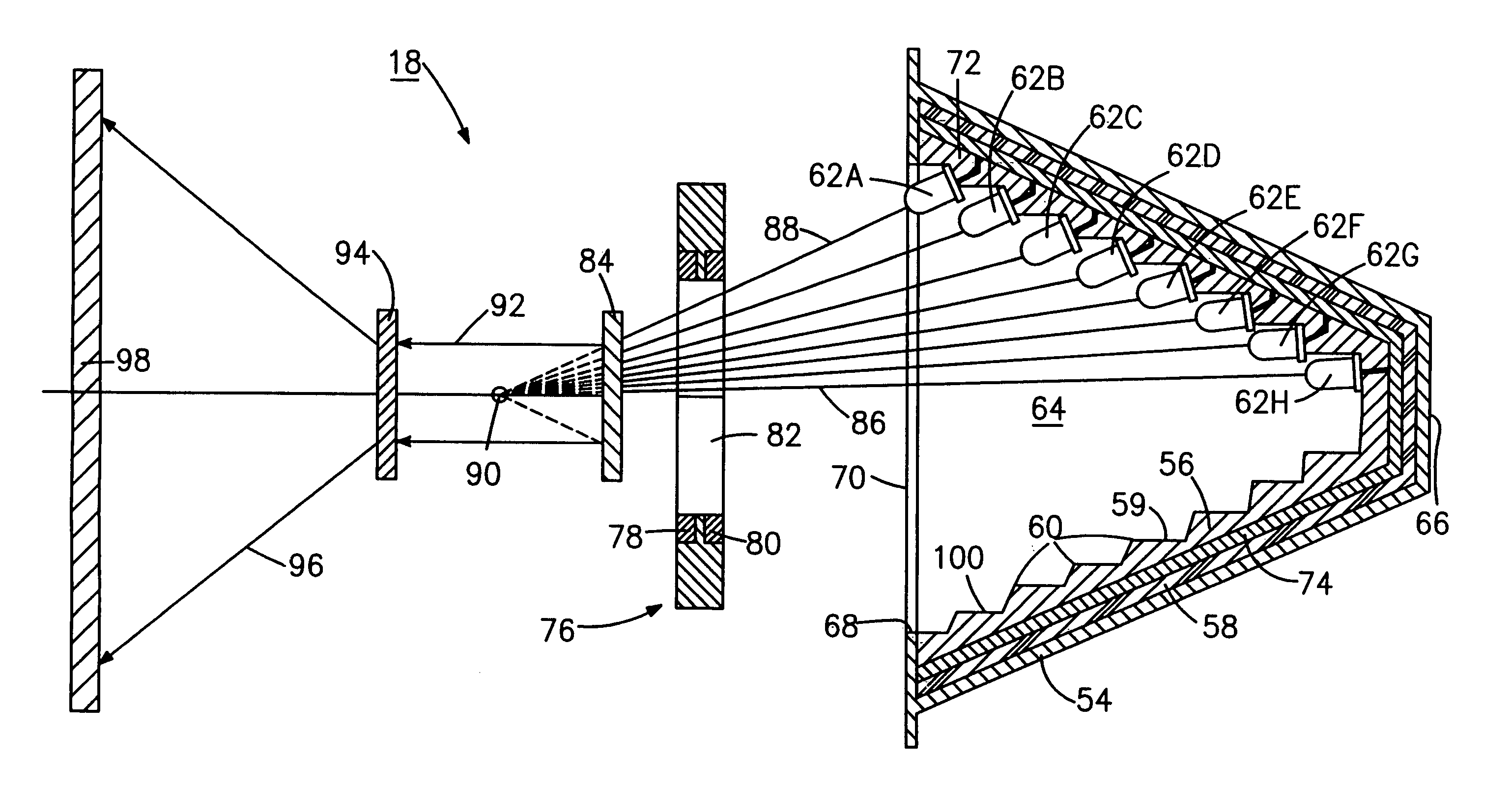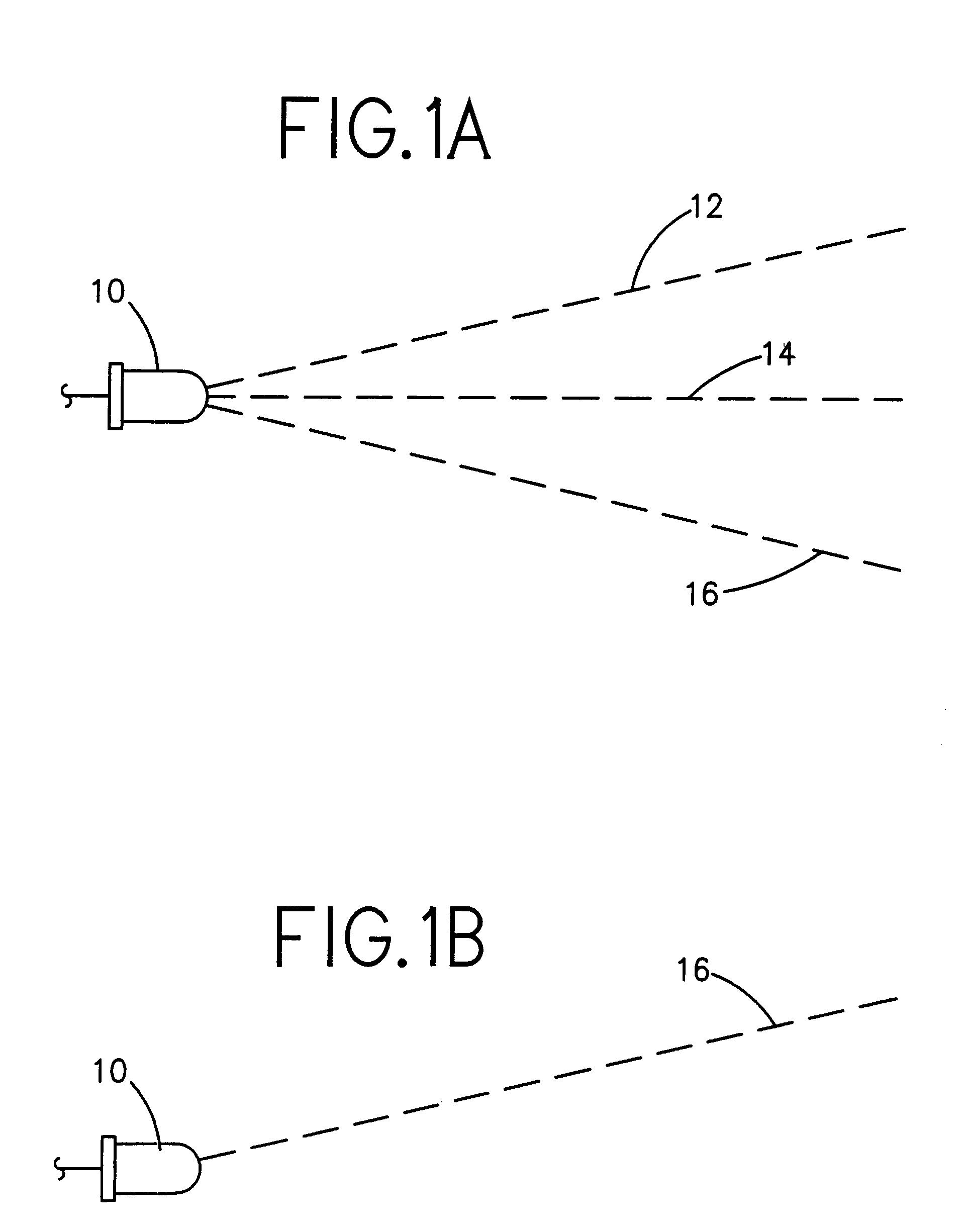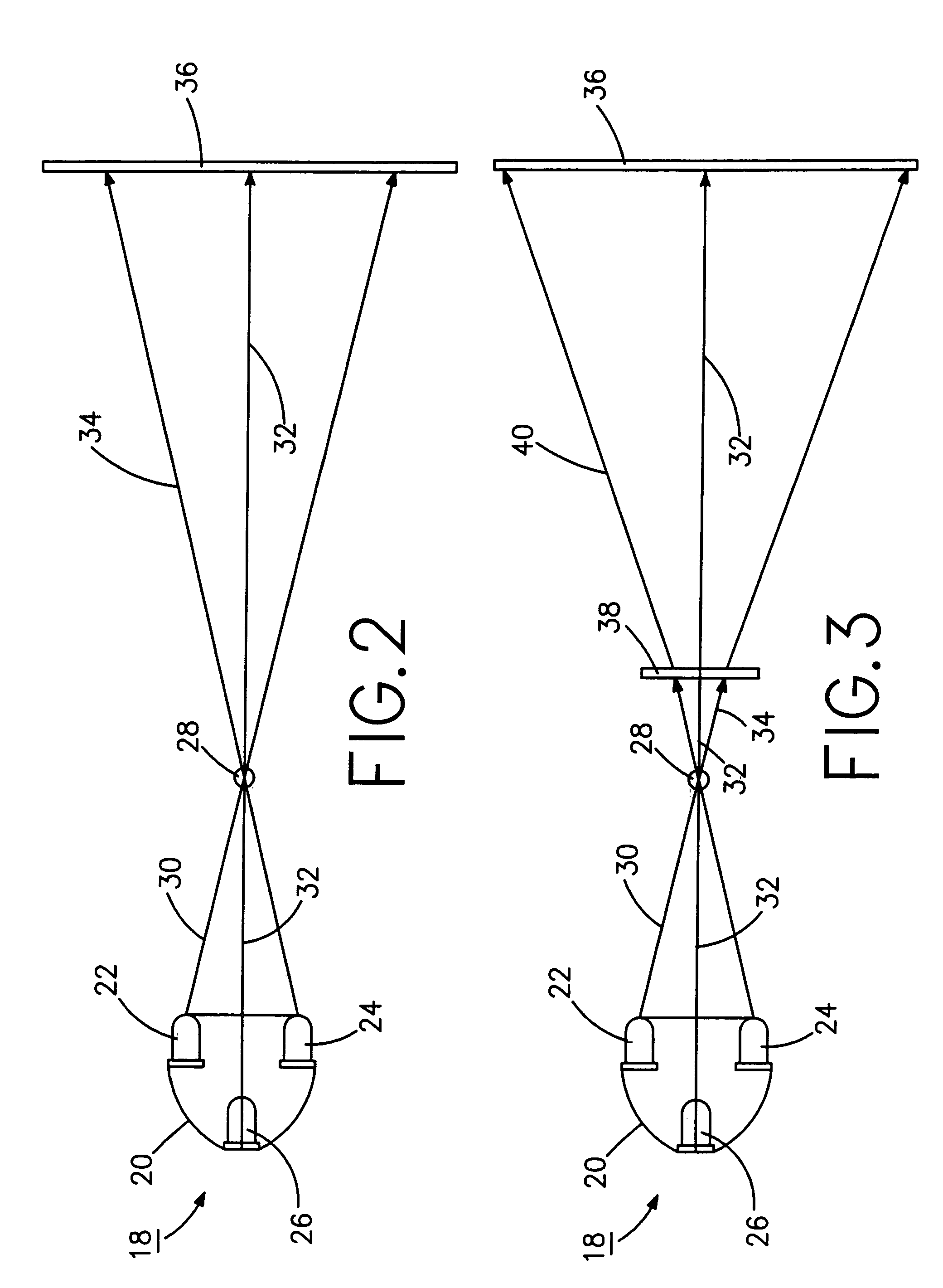Diode lighting system
a diode and lighting system technology, applied in the direction of printed circuit assembling, coupling device connection, printed circuit non-printed electric component association, etc., can solve the problems of limited number of leds that can be used, no named prior art disclosure is applicable to large scale, and the cost of lighting system is low, and the overall cost is still high
- Summary
- Abstract
- Description
- Claims
- Application Information
AI Technical Summary
Benefits of technology
Problems solved by technology
Method used
Image
Examples
Embodiment Construction
[0126]Reference is now made in detail to the drawings and in particular to FIGS. 1–7 in which identical or similar parts are designated by the same reference numerals throughout.
[0127]FIG. 1A shows a typical light emitting diode (LED), or diode, 10 generating a diode beam 12 that comprises a diode central beam 14 and a typical diode beam spread 16 that typically ranges between approximately 50° to 70° in accordance with the specifications of various manufacturers. Most of the diode beam strength and brightness is contained in the course of this application in diode central beam 14 with the understanding that typical slight diode beam spread 16 is included as in FIG. 1B. FIGS. 2–7 show various configurations of an architectural, theatrical, and stage invention with each configuration being schematically represented as follows.
[0128]A basic configuration of the architectural, theatrical, and stage lighting system 18 in accordance with the present invention is shown in FIG. 2. Lighting...
PUM
 Login to View More
Login to View More Abstract
Description
Claims
Application Information
 Login to View More
Login to View More - R&D
- Intellectual Property
- Life Sciences
- Materials
- Tech Scout
- Unparalleled Data Quality
- Higher Quality Content
- 60% Fewer Hallucinations
Browse by: Latest US Patents, China's latest patents, Technical Efficacy Thesaurus, Application Domain, Technology Topic, Popular Technical Reports.
© 2025 PatSnap. All rights reserved.Legal|Privacy policy|Modern Slavery Act Transparency Statement|Sitemap|About US| Contact US: help@patsnap.com



